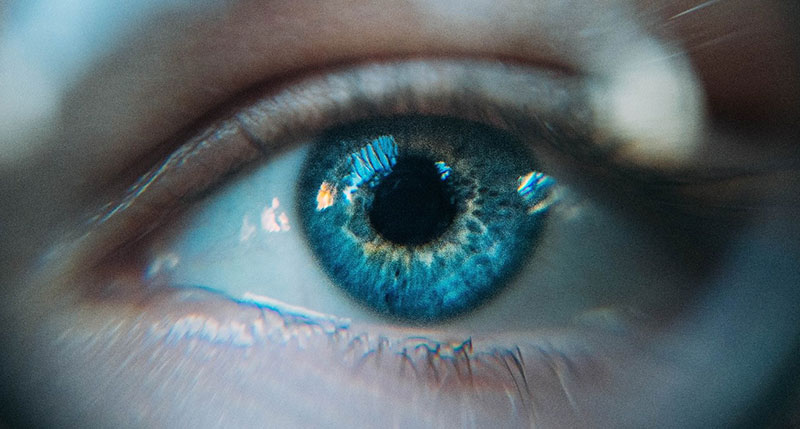March is Save Your Vision Month, so we thought we’d address a common challenge we see in our offices: Digital eye strain, resulting from spending excess time staring at digital screens that emit blue light.
You’ve likely heard about blue light and its effect on the human body in the news. But what exactly is “blue light,” and why should you be concerned about it? Those are the two questions we’ll answer in this post.
What is blue light?
Blue light is our name for a visible light spectrum that exists in the range from 420 to 480 nm—which means that it’s very near on the light spectrum to the invisible ultraviolet (UV) light emitted by the sun. Blue light is a short wavelength, high-intensity light that can be both harmful and beneficial.
On the positive side, blue light is what makes the sky look blue. On the negative side, it can cause glare or hazy vision, and long-term exposure to it may be harmful to your eyes.
While you’ve likely heard that blue light is produced by digital device screens, you may or may not know this fact: The sun is by far the largest producer of blue light. The sun’s UV rays produce far more blue light than other light sources. The issue with digital devices is that we often have them quite close to our faces for hours at a time, so blue light exposure from devices can be quite intense.
When your eyes absorb blue light, it acts to suppress melatonin – the natural hormone that prompts your body to get sleepy after the sun goes down. That’s beneficial during the day (or while you’re trying to stay awake through a long Zoom presentation). But, it can be troublesome at night if you spend time on a digital device close to bedtime when you want your body to produce melatonin and help you get a good night’s sleep.
According to the Vision Council, more than 80% of adults report using a digital device—and therefore staring at a screen—in the hour before they (try to) go to sleep.
Why should I be concerned about blue light?
When you spend a lot of time looking at screens, your eyes are exposed to abnormal amounts of blue light. Studies show that can upset your sleep/wake cycle and cause sleep deprivation.
In addition, the intense focus necessary to look at screens—especially the “tiny Internet” on your phone—can cause digital eye strain.
Digital eye strain symptoms include dry, itchy or tired eyes; headaches; and blurred vision. You might even feel like you can’t keep your eyes open for another minute.
According to the American Optometric Association, exposure to blue light “Is a risk factor for the onset of age-related macular degeneration, a deterioration of the part of the retina responsible for sharp, central vision.”
How can I protect my eyes from blue light?
We’re glad you asked! Proper eyewear is the best way to protect your eyes from the side effects of blue light. Here’s what we recommend:
- When outdoors, wear sunglasses with high-quality lenses that block 99 to 100% of UV radiation and around 75 to 90% of visible light.
- When using your cell phone, tablet, computer or other digital device, wear computer glasses that have a special blue light filter coating. This coating will protect your eyes and ease the strain on your visual system.
- Practice the 20-20-20 rule: Every 20 minutes or so, stop what you’re doing on that screen and shift your gaze 20 feet away and focus on an object for 20 seconds. You can also blink your eyes quickly 20 times after that for an added refresher.
- Make your appointment for a comprehensive annual eye exam so you can visit our eye care team. We’ll make sure your eyes are healthy and that you’ll continue to see your best!

